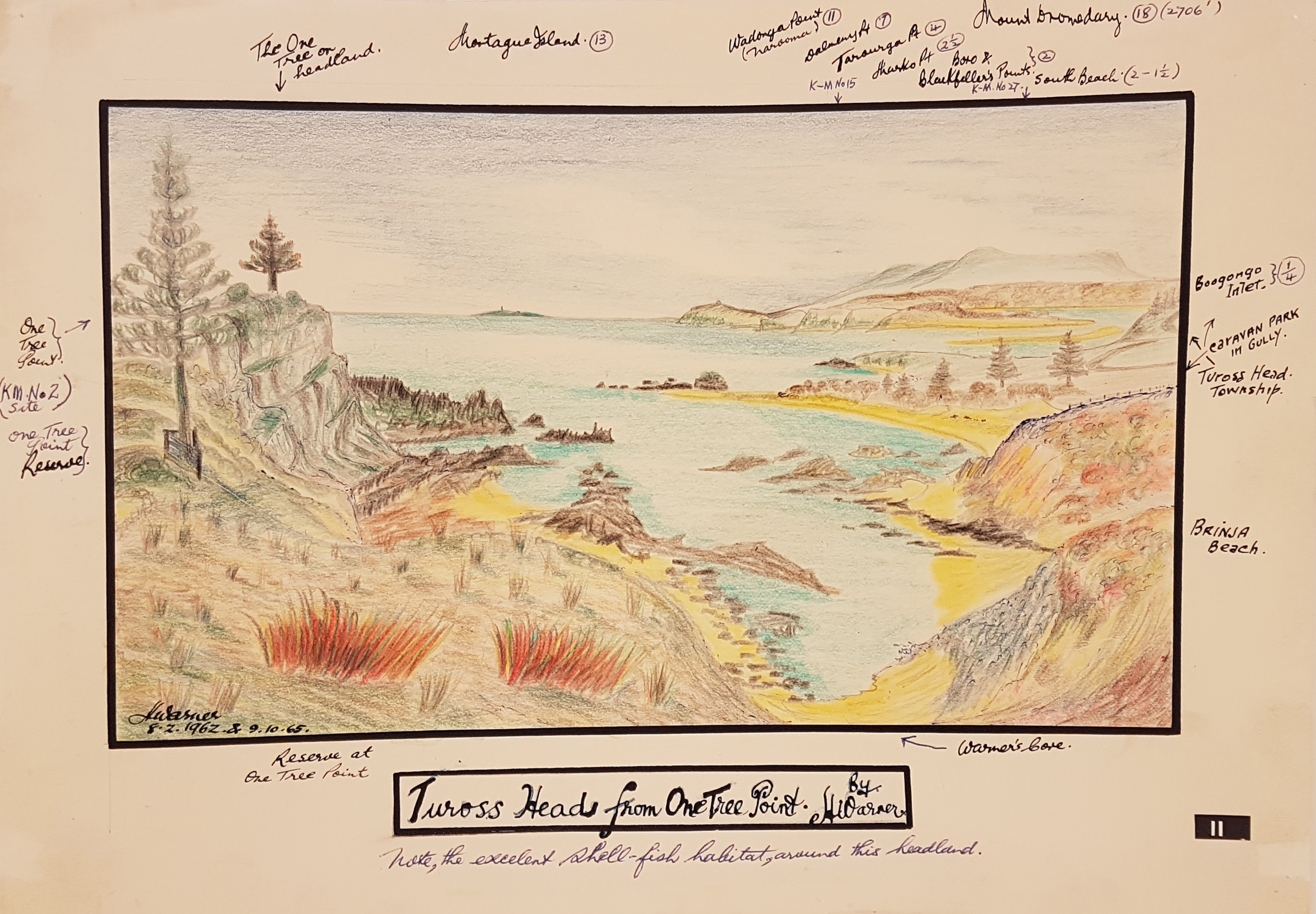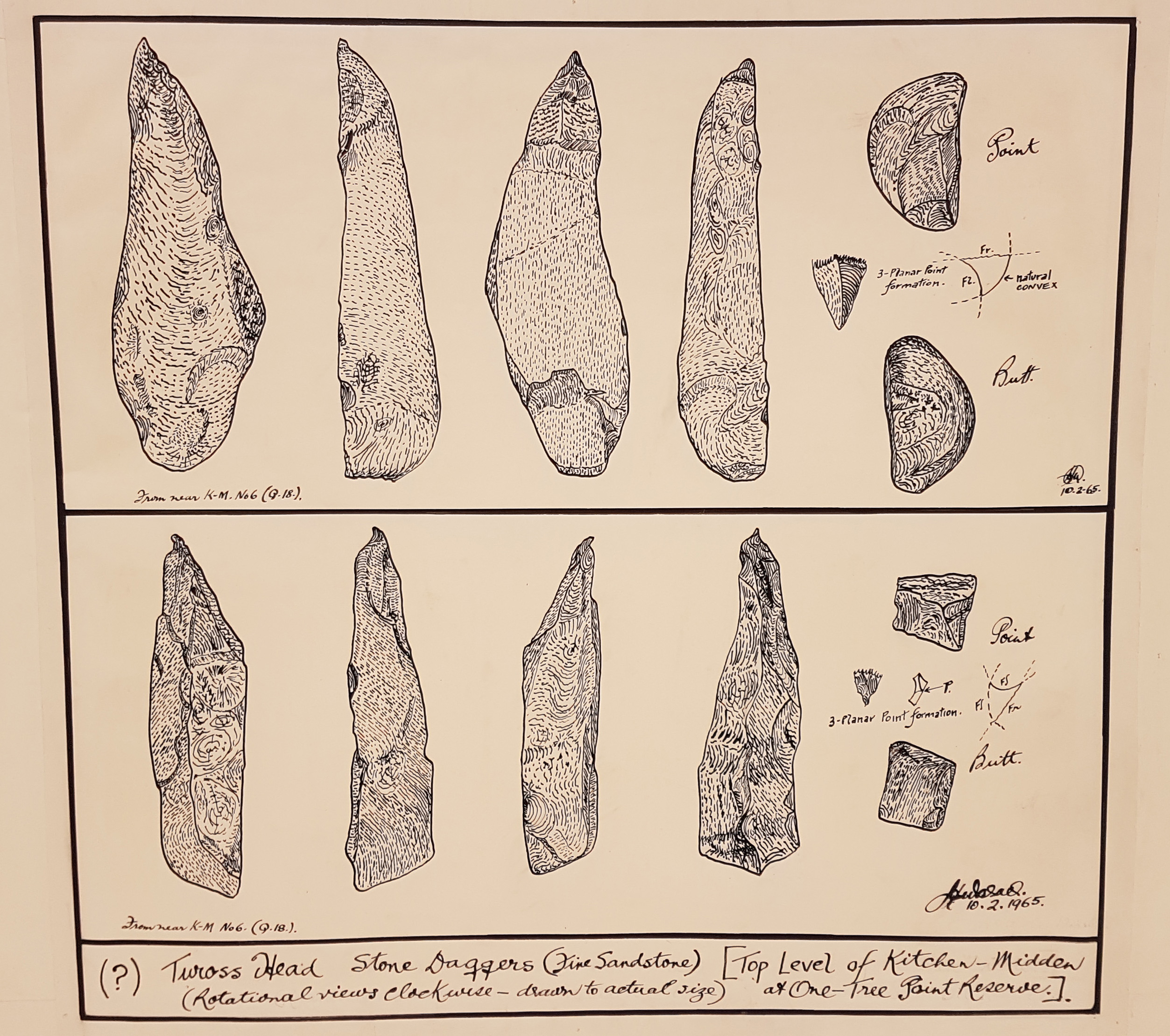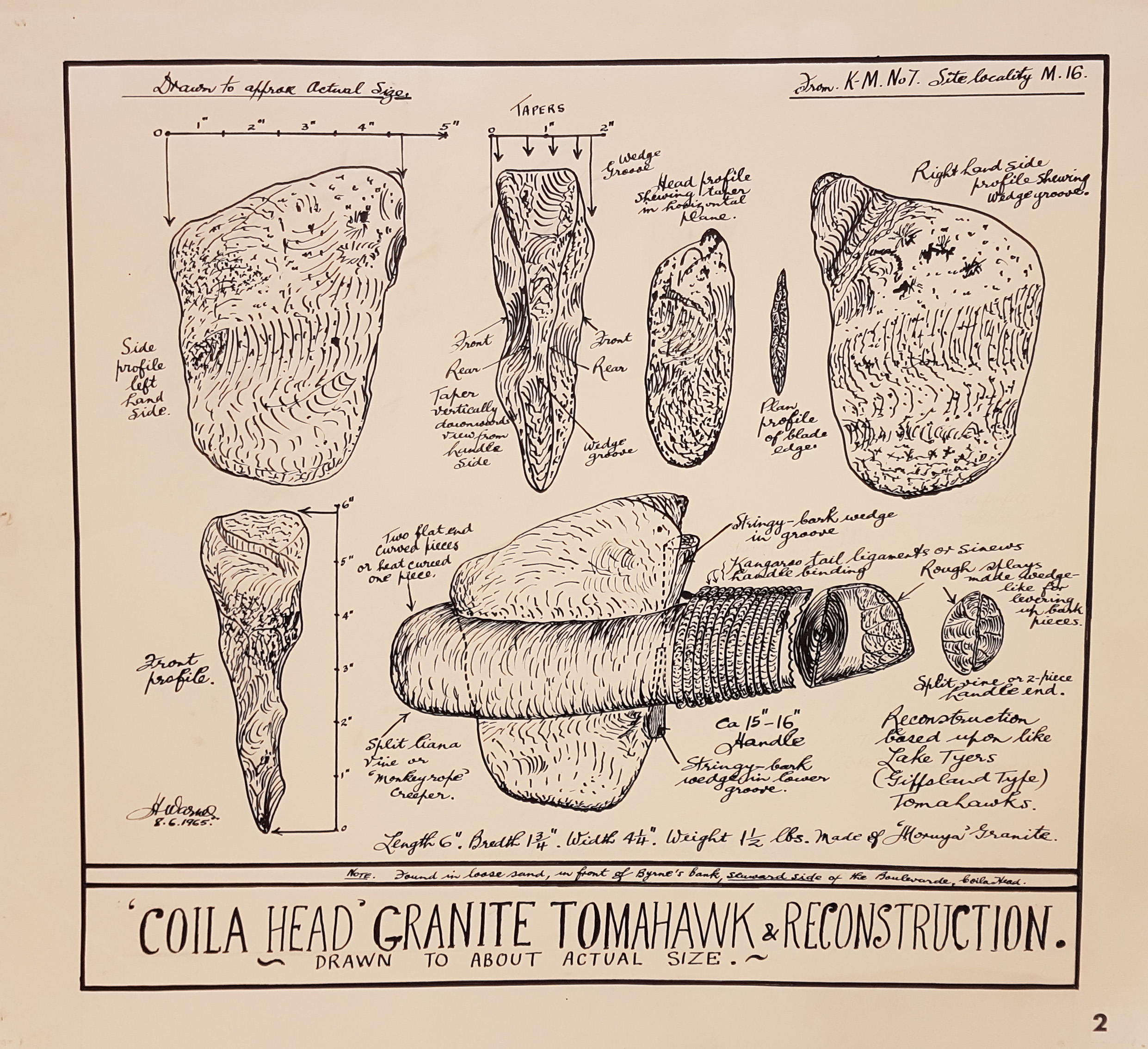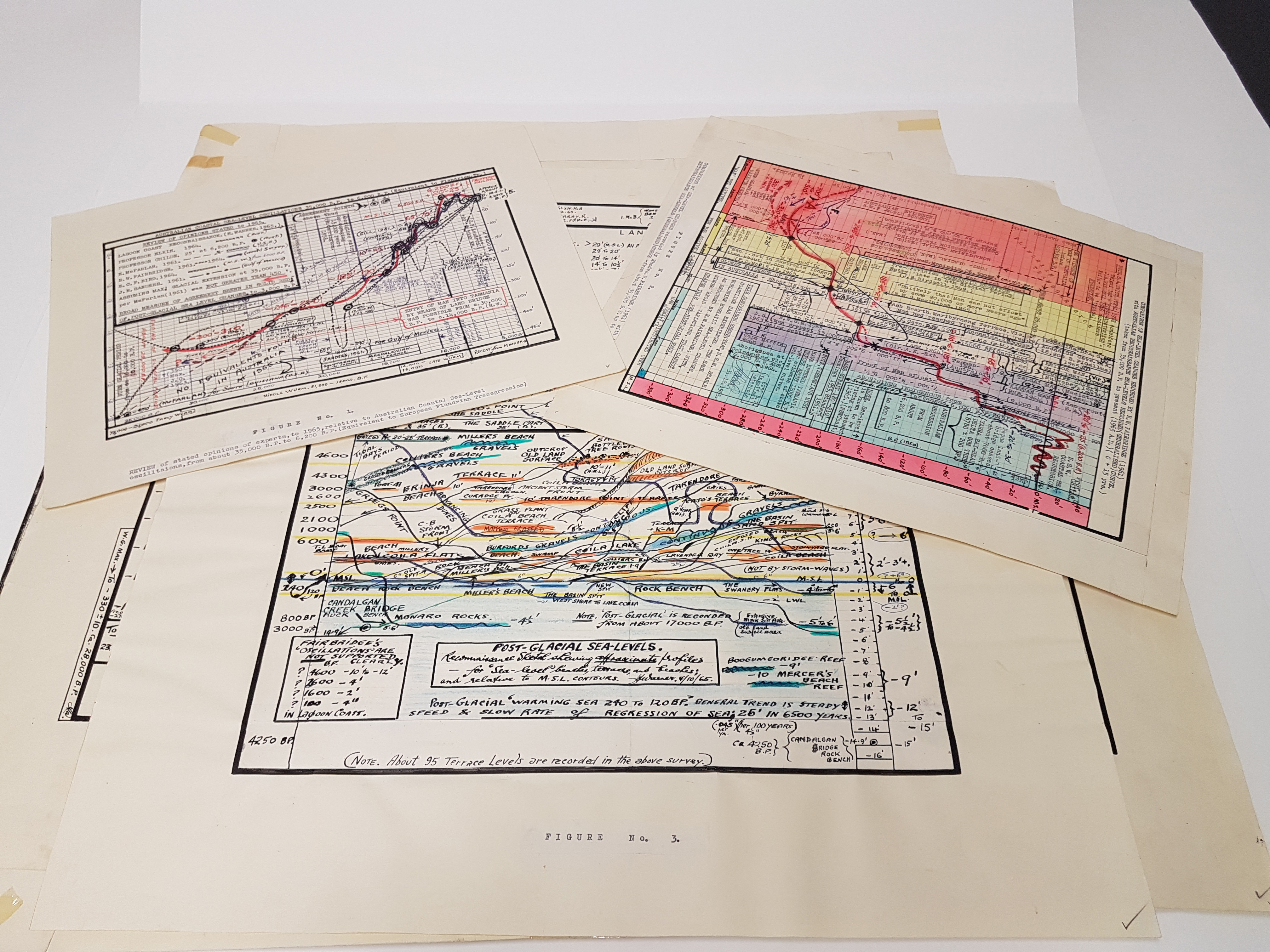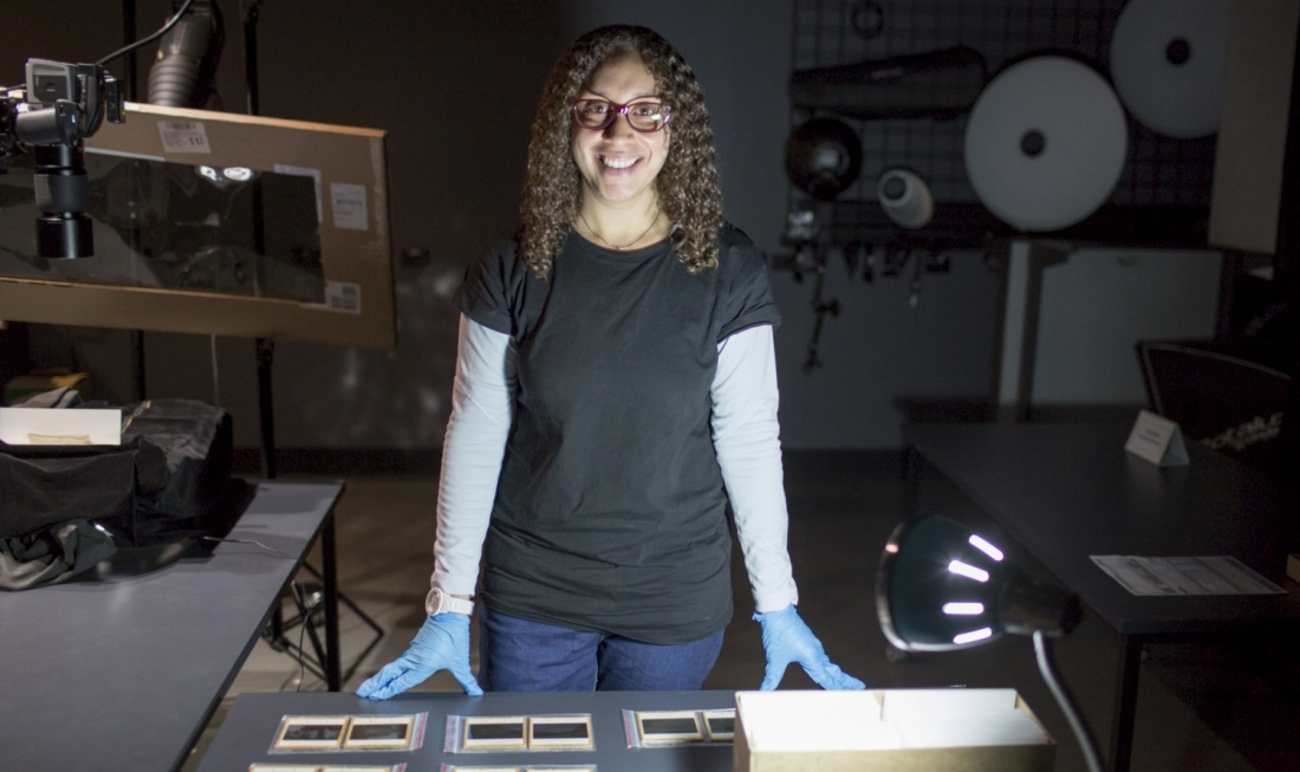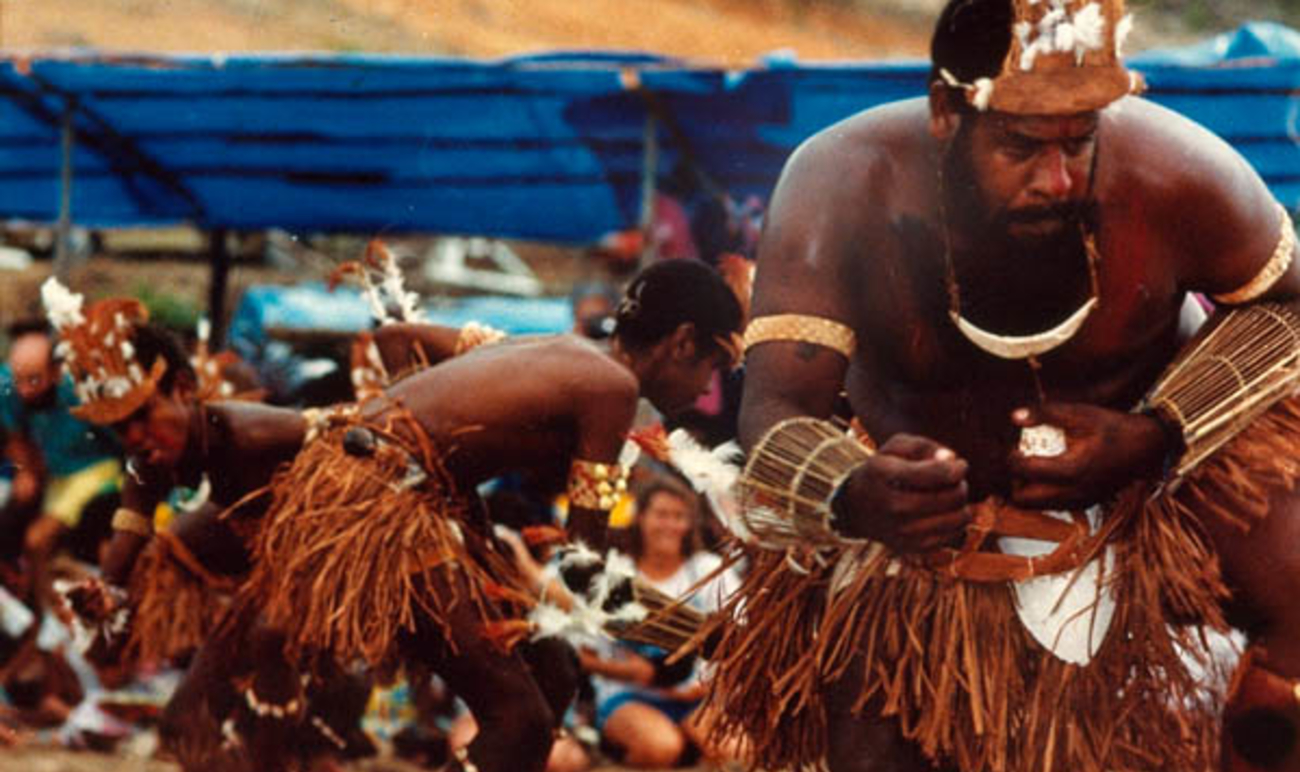A serendipitous discovery
The following content may include offensive and/or hurtful language. It reflects the language of the time and is not condoned by AIATSIS.
Discovering the collection
An extraordinary collection of drawings, sketches, maps and diagrams was uncovered in one of our vaults during a sorting process. Unfortunately no information accompanied the material to indicate where it had originally come from. The team that unearthed the material decided that it would be best cared for by the manuscript unit and suggested that the items may belong to the Harry Warner collection already held at AIATSIS. The items were relocated to the manuscript collection storage area for safe keeping. Curiosity led me to open the folders to see what we had received. I was amazed at the intricacy, detail and colour of the diagrams, sketches and drawings and enthusiastically took on the challenge of reuniting this collection.
Piecing together the collection
A search of our catalogue for material by Harry Warner revealed that we held a manuscript collection of nine volumes containing reports related to Brinja material culture. These were deposited with AIATSIS in 1973 and were located in the manuscript collection storage area. Closer examination of the volumes revealed descriptions of numbered sketch maps, drawings, figures and diagrams, with cross references to specific items.
Examination of the newly discovered material revealed that everything was numbered, and that the numbers correlated to the lists in the nine reports! By using the numbers on the new material and the lists in the reports, I was able to rearrange the items into their original groupings and order.
While examining and recording information about the collection material, a large folder containing some of the sketches was left open. This caught the attention of a colleague who recognised the handwriting and the type of artwork. She told me that she had observed some drawings of stone implements in a map plan cabinet, also located in the manuscript collection storage area. Examining the drawings confirmed that they also belonged to the same collection!
Some of the features described in the collection include: locations of kitchen middens; significant trees; camp sites; stone tools; geographical and topographical maps; planimetric maps; Aboriginal clan groups and locations; Brinja prehistory; Brinja sociology and cultural anthropology; history of the Lagoon Coast; depopulation and genealogical relationships.
Who was Harry Warner?
Harry Warner was an amateur archaeologist who lived at Tuross Head on the south coast of New South Wales. In the mid to late 1950s he became interested in the evidence of past Aboriginal occupation, taking numerous photographs and notes for ready reference. Encouraged by Fred McCarthy, then Curator of Anthropology at the Australian Museum, Warner documented his research in order to record the principal sites and to collect, label and preserve surface finds for reference.
Harry Warner and AIATSIS
Sometime later when Fred McCarthy was Principal of the Australian Institute of Aboriginal Studies (AIAS), as AIATSIS was then known, he asked Harry Warner to create archaeological site record cards for all the principal sites he had discovered, recording evidence of past Aboriginal occupation in the Tuross Peninsula area. Warner began this work in the 1960s and consulted with Percy Davis (one of the few remaining Brinj-Yuin people on the Far South Coast at the time), Robert Cantlay and Henry Oswald Hawdon (who were both the oldest residents of Turlinjah at the time) to verify the information.
At the beginning of 1966, Harry Warner was asked to make a ‘Reconnaissance report’ of the ‘Brinja material culture and pre-history of the Lagoon Coast’ to connect, integrate and bring some coherence to the recorded site descriptions. McCarthy also visited Warner to make site visits and view some of the stone implements he had collected.
David Moore, Curator of Anthropology at the Australian Museum, visited Warner on 14 and 15 December 1966 to view the stone implements. Sometime later, in May 1968, the stone implements were collected by staff from the Australian Museum. Warner sent the drawings, maps and figures to the AIAS, along with his notes which were to be typed up by AIAS staff.
Collection reunited
The disassociated components of the Warner collection have now been reunited, re-organised into their original order and described in context. This maintains the authenticity of the collection and enables users to interpret and analyse the material in ways that suit them.
As an archivist, reuniting items, arranging them into logical, or original, order and describing collections in context are a few of the many tasks that bring me satisfaction and enjoyment. I value the knowledge I gain every time I work on a manuscript collection, and consider it a privilege to work on these collections at AIATSIS. After 10 years of unpacking boxes, examining the contents and removing thousands of rusty staples, I am still passionate about the material I work with and the work I do.
The call number and title of the material is:
A link to the finding aid for this collection can be found in the Mura© catalogue.
Harry Warner also took photographs of the stone implements, areas surveyed, scarred trees, rock carvings, and his drawings, maps and diagrams. The photographic images in this collection are not accessible on-line. To make an appointment to view this material please contact Collectionenquiry@aiatsis.gov.au.
Access to the collection
Due to the sensitive nature of some of this material permission to view this collection will need to be obtained from the Executive Director, Collection Services Group.
Please contact CollectionEnquiry@aiatsis.gov.au
References
AIATSIS Registry files. Warner Mr H. 1965/39-1; Warner Mr H. 1965/39-2; Warner Mr H. 1965/39-3.
Bettington, Jackie, ed & Bettington, Jackie, 1968-, (editor of compilation.) & Eberhard, Kim, (editor of compilation.) & Loo, Rowena, (editor of compilation.) & Smith, Clive, (editor of compilation.) et al. 2008, Keeping archives, 3rd edition, Australian Society of Archivists Inc., Dickson, ACT.
Harry Warner, 'Reconnaissance report on the Brinja tribe material culture and pre-history of the Lagoon Coast (Moruya Head to South Kianga, NSW)', Australian Institute of Aboriginal and Torres Strait Islander Studies, MS 2303.
